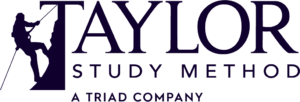The video below is the section for Autistic Disorder (Physiological Psychology Domain) from Part 5 of TSM’s lecture series on DSM-5 and the EPPP, followed by a transcript. This lecture series aims to equip those preparing for the EPPP with everything you need to know about the impact DSM-5 will be having on the EPPP. To watch all of Part 5, click HERE. To watch earlier lectures in this series, or register for our webinar series on DSM-5 and the EPPP, click HERE.
Transcript of DSM-5 EPPP Lecture Video: Autistic Disorder (Physiological Psychology Domain)
NARRATIVE DEFINITION:
The DSM-5 reports frequencies for Autism Spectrum Disorder at 1% of the population. Why rates have been increasing is unknown. This diagnosis is more prevalent in boys than girls, with a gender ratio of 4:1, males to females.
A number of genetic, environmental, and genetic x environmental variables have been identified as possible factors that contribute to the etiology of Autistic Disorder; however, research has not yet identified a definitive etiological mechanism. Children who are diagnosed with Autism Spectrum Disorder show impaired social interactions, communication deficits, and repetitive/stereotyped behavior.
Children may be diagnosed with Autism Spectrum Disorder as early as 24 months although symptoms may be observable before 12 months, depending on severity of symptoms.
Children with Autism Spectrum Disorder struggle with social interactions, and demonstrate difficulties communicating with others. Language abilities are often severely delayed. Individuals with autism may echo what is said to them, a phenomenon called echolalia. Palilalia, which is the repetition of one’s own words, also occurs in autism; however, this is less common than echolalia. Abstract thinking is generally impaired and individuals with autism often interpret information in a rigidly concrete, literal manner. Individuals with autism vary widely in their intellectual abilities, ranging from severely impaired to exceptionally gifted.
Some individuals with Autism Spectrum Disorder who learn to communicate reasonably well often engage in conversations regarding their stereotyped interests. Individuals with autism may repeat body movements, including engaging in aggressive or self-injurious behaviors. Or they have restricted intellectual interests in one particular category, for example, insects. They may become fascinated with specific objects or movements, and engage in these to the exclusion of everything else.
Current research has robustly demonstrated that social impairments observed in Autism Spectrum Disorder are associated with abnormal activity in the fusiform gyrus (located in the ventral temporal lobe) and the amygdala. Together, these brain regions have been shown to be involved in a network that fosters the development of face recognition and the emotional salience involved in facial recognition and social interactions. The causal direction of this research remains unknown.
FLASHCARD:
Diagnostic features
1. 1% of population
2. More prevalent in boys, gender ratio: 4:1
3. Impaired social interactions, communication deficits, repetitive/stereotyped behavior
4. Diagnosed as early as 24 months, some symptoms observable before 12 months, depending on severity of symptoms
5. Impaired social interactions
a. Marked impairment in nonverbal communication behaviors
b. Failure to develop peer relationships
c. Lack of social/emotional reciprocity
6. Communication/language deficits
a. Delay of spoken language
b. Impaired ability to sustain reciprocal conversation with others
i. Echolalia: Echoing words that are said by another person
ii. Palilalia: Repeating words that have been self-generated or said by oneself
7. Concrete interpretation of verbal information: Abstract thinking is impaired (e.g., understanding humor may be difficult)
8. Repeated body movement, aggressive or self-injurious
9. Restricted range of interests
10. Facinated with specific objects or movements
11. Neural correlates of social impairments
Abnormal activity in the fusiform gyrus
a. Located in the ventral temporal lobe
b. Related to face recognition
Abnormal activity in the amygdala
a. Subcortical bilateral brain region
b. Related to detecting emotional salience of stimuli
QUESTION:
Ashley, a young girl who is six years old and diagnosed with autism, continually repeats certain words. Based upon her behavior it is more than likely Ashley has:
ANSWERS:
A. echolalia.
B. speech sound disorder.
C. Rett syndrome.
D. palilalia.
RATIONALE: The correct answer is D. Palilalia is the repetition of one’s own words. Echolalia is when an individual with autism echoes what is said to them, which makes Answer A incorrect. Speech sound disorder (B) involves persistent difficulty with speech sound production that interfers with verbal communication. Individuals with Rett syndrome demonstrate impaired social interactions, but these impairments are only transient. Rett’s disorder is also associated with head growth deceleration, and poor coordination, making Answer C incorrect.
